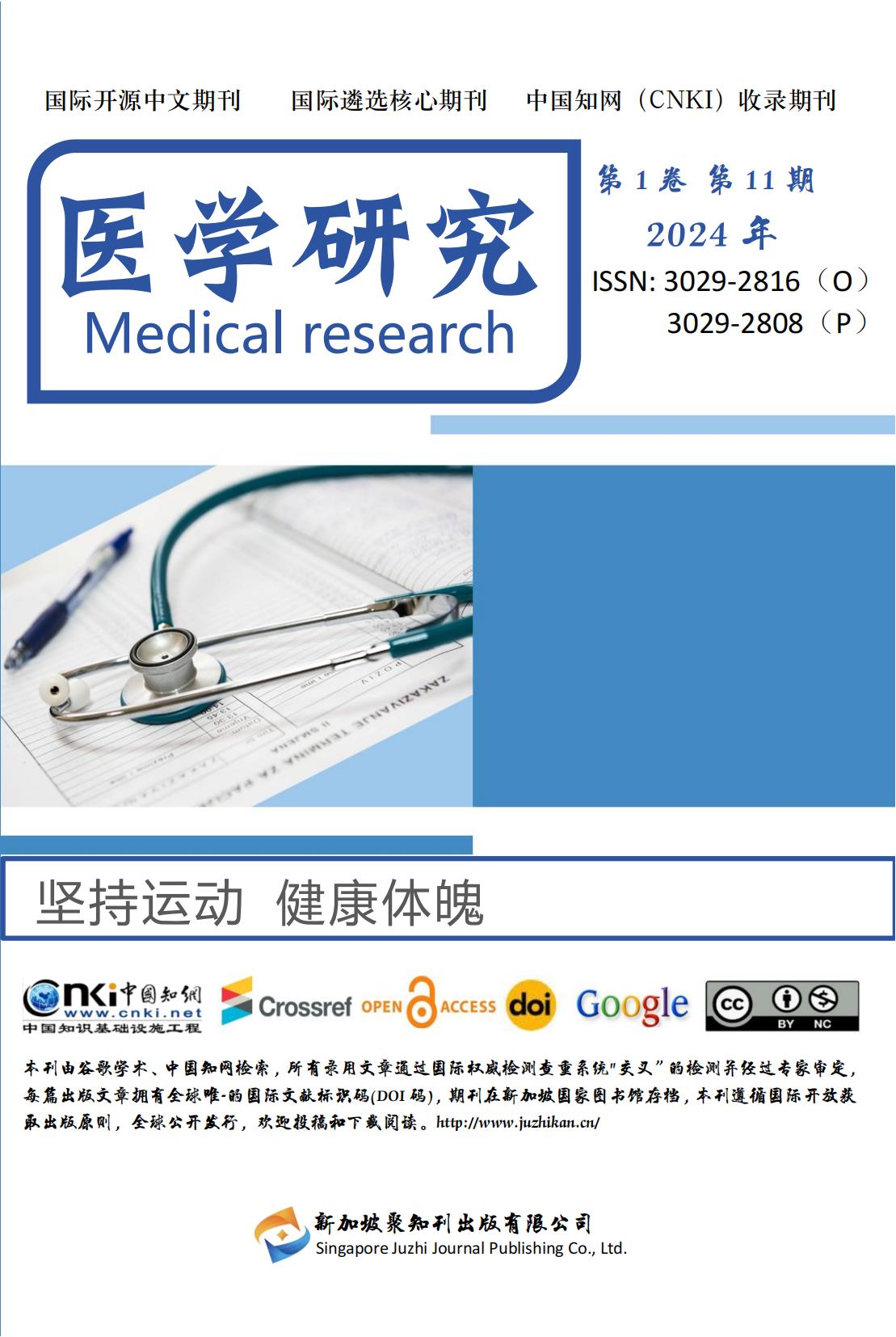
 info@juzhikan.asia
info@juzhikan.asia
 info@juzhikan.asia
info@juzhikan.asia
青海大学附属医院肾病科,青海西宁,810000;
摘要:慢性肾脏病(CKD)是全球公共卫生的重大挑战,随着患病率不断上升,给全球医疗保健系统带来了巨大财务负担。CKD患者随着疾病进展出现各种并发症,而心血管疾病是引起CKD患者发病和死亡的最常见原因。肺动脉高压(PH)在终末期肾病(ESRD)患者中的患病率为27%-58%。缺氧诱导因子(HIFs)是生物体对缺氧反应调控机制中的关键调控因子,广泛参与缺氧诱导的适应性反应,它在机体组织及不同脏器中分布,并参与多种疾病的发生发展。现就HIFs与肾脏疾病之间的关系以及HIFs对肺动脉高压的影响作一综述。
关键词:慢性肾病;缺氧诱导因子;肺动脉高压;缺氧诱导因子脯氨酰羟化酶抑制剂
参考文献
[1] Stevens P E, Ahmed S B, Carrero J J, et al. KDIGO 2024 clinical practice guideline for the evaluation and management of chronic kidney disease[J]. Kidney International, 2024, 105(4): S117-S314.
[2] Kovesdy C P. Epidemiology of chronic kidney disease: An update 2022[J]. Kidney International Supplements, 2022, 12(1): 7-11.
[3] GBD Chronic Kidney Disease Collaboration. Global, regional, and national burden of chronic kidney disease, 1990-2017: A systematic analysis for the global burden of disease study 2017[J]. Lancet (London, England), 2020, 395(10225): 709-733.
[4] Travers A, Farber H W, Sarnak M J. Pulmonary hypertension in chronic kidney disease[J]. Cardiology Clinics, 2021, 39(3): 427-434.
[5] Ishigami J, Kansal M, Mehta R, et al. Cardiac structure and function and subsequent kidney disease progression in adults with CKD: The chronic renal insufficiency cohort (CRIC) study[J]. American Journal of Kidney Diseases: The Official Journal of the National Kidney Foundation, 2023, 82(2): 225-236.
[6] Bolignano D, Lennartz S, Leonardis D, et al. High estimated pulmonary artery systolic pressure predicts adverse cardiovascular outcomes in stage 2-4 chronic kidney disease[J]. Kidney International, 2015, 88(1): 130-136.
[7] Khemchandani M, Nasir K, Qureshi R, et al. Frequency of pulmonary hypertension and its associated risk factors in end-stage renal disease (ESRD) patients on maintenance hemodialysis[J]. Cureus, 16(2): e55206.
[8] Schoenberg N C, Argula R G, Klings E S, et al. Prevalence and mortality of pulmonary hypertension in ESRD: a systematic review and meta-analysis[J]. Lung, 2020, 198(3): 535-545.
[9] Semenza G L, Wang G L. A nuclear factor induced by hypoxia via de novo protein synthesis binds to the human erythropoietin gene enhancer at a site required for transcriptional activation[J]. Molecular and Cellular Biology, 1992, 12(12): 5447-5454.
[10] Liu Z, Wu Z, Fan Y, et al. An overview of biological research on hypoxia-inducible factors (HIFs)[J]. Endokrynologia Polska, 2020, 71(5): 432-440.
[11] Duan C. Hypoxia-inducible factor 3 biology: Complexities and emerging themes[J]. American Journal of Physiology. Cell Physiology, 2016, 310(4): C260-269.
[12] Jiang B H, Zheng J Z, Leung S W, et al. Transactivation and inhibitory domains of hypoxia-inducible factor 1alpha. Modulation of transcriptional activity by oxygen tension[J]. Journal of Biological Chemistry, 1997, 272(31): 19253-19260.
[13] Lee J W, Bae S H, Jeong J W, et al. Hypoxia-inducible factor (HIF-1)alpha: Its protein stability and biological functions[J]. Experimental & Molecular Medicine, 2004, 36(1): 1-12.
[14] Liu H, Li Y, Xiong J. The role of hypoxia-inducible factor-1 alpha in renal disease[J]. Molecules (Basel, Switzerland), 2022, 27(21): 7318.
[15] Li D, Xie X, Zhan Z, et al. HIF-1 induced tiRNA-lys-CTT-003 is protective against cisplatin induced ferroptosis of renal tubular cells in mouse AKI model[J]. Biochimica Et Biophysica Acta. Molecular Basis of Disease, 2024, 1870(7): 167277.
[16] Haase V H. Pathophysiological consequences of HIF activation: HIF as a modulator of fibrosis[J]. Annals of the New York Academy of Sciences, 2009, 1177: 57-65.
[17] Sugahara M, Tanaka T, Nangaku M. Hypoxia-inducible factor and oxygen biology in the kidney[J]. Kidney360, 2020, 1(9): 1021-1031.
[18] Zheng W, Wang Z, Jiang X, et al. Targeted drugs for treatment of pulmonary arterial hypertension: Past, present, and future perspectives[J]. Journal of Medicinal Chemistry, 2020, 63(24): 15153-15186.
[19] Waypa G B, Schumacker P T. Roles of HIF1 and HIF2 in pulmonary hypertension: It all depends on the context[J]. European Respiratory Journal, 2019, 54(6): 1901929.
[20] Zhang H, He H, Cui Y, et al. Regulatory effects of HIF-1α and HO-1 in hypoxia-induced proliferation of pulmonary arterial smooth muscle cells in yak[J]. Cellular Signalling, 2021, 87: 110140.
[21] Wan J J, Yi J, Wang F Y, et al. Expression and regulation of HIF-1a in hypoxic pulmonary hypertension: Focus on pathological mechanism and pharmacological treatment[J]. International Journal of Medical Sciences, 2024, 21(1): 45-60.
[22] Sun H, Zhang H, Li K, et al. ESM-1 promotes adhesion between monocytes and endothelial cells under intermittent hypoxia[J]. Journal of Cellular Physiology, 2019, 234(2): 1512-1521.
[23] Xu H, Ling M, Xue J, et al. Exosomal microRNA-21 derived from bronchial epithelial cells is involved in aberrant epithelium-fibroblast cross-talk in COPD induced by cigarette smoking[J]. Theranostics, 2018, 8(19): 5419-5433.
[24] Chan X Y, Volkova E, Eoh J, et al. HIF2A gain-of-function mutation modulates the stiffness of smooth muscle cells and compromises vascular mechanics[J]. iScience, 2021, 24(4): 102246.
[25] Dai Z, Zhu M M, Peng Y, et al. Therapeutic targeting of vascular remodeling and right heart failure in pulmonary arterial hypertension with a HIF-2α inhibitor[J]. American Journal of Respiratory and Critical Care Medicine, 2018, 198(11): 1423-1434.
[26] Macias D, Moore S, Crosby A, et al. Targeting HIF2α-ARNT hetero-dimerisation as a novel therapeutic strategy for pulmonary arterial hypertension[J]. European Respiratory Journal, 2021, 57(3): 1902061.
[27] Wang N, Hua J, Fu Y, et al. Updated perspective of EPAS1 and the role in pulmonary hypertension[J]. Frontiers in Cell and Developmental Biology, 2023, 11: 1125723.
[28]中国医师协会肾脏内科医师分会肾性贫血指南工作组. 中国肾性贫血诊治临床实践指南[J]. 中华医学杂志, 2021, 101(20): 1463-1502.
[29] Tan W, Wang X, Sun Y, et al. Roxadustat reduces left ventricular mass index compared to rHuEPO in haemodialysis patients in a randomized controlled trial[J]. Journal of Internal Medicine, 2024, 295(5): 620-633.
[30] Yazaki M, Nabeta T, Takigami Y, et al. Efficacy of hypoxia-inducible factor prolyl hydroxylase inhibitor on clinical parameters in patients with heart failure[J]. Medicina (Kaunas, Lithuania), 2024, 60(1): 84.